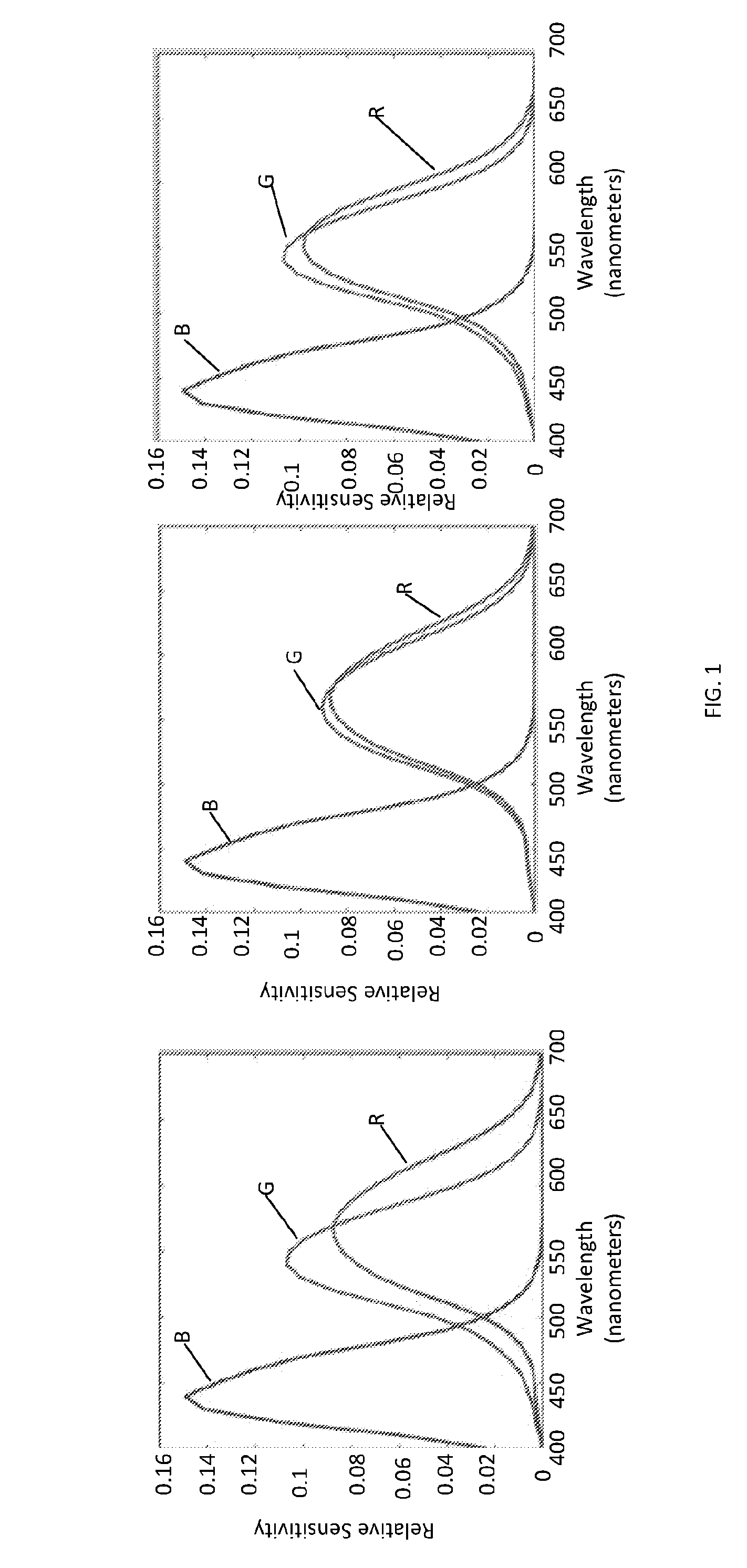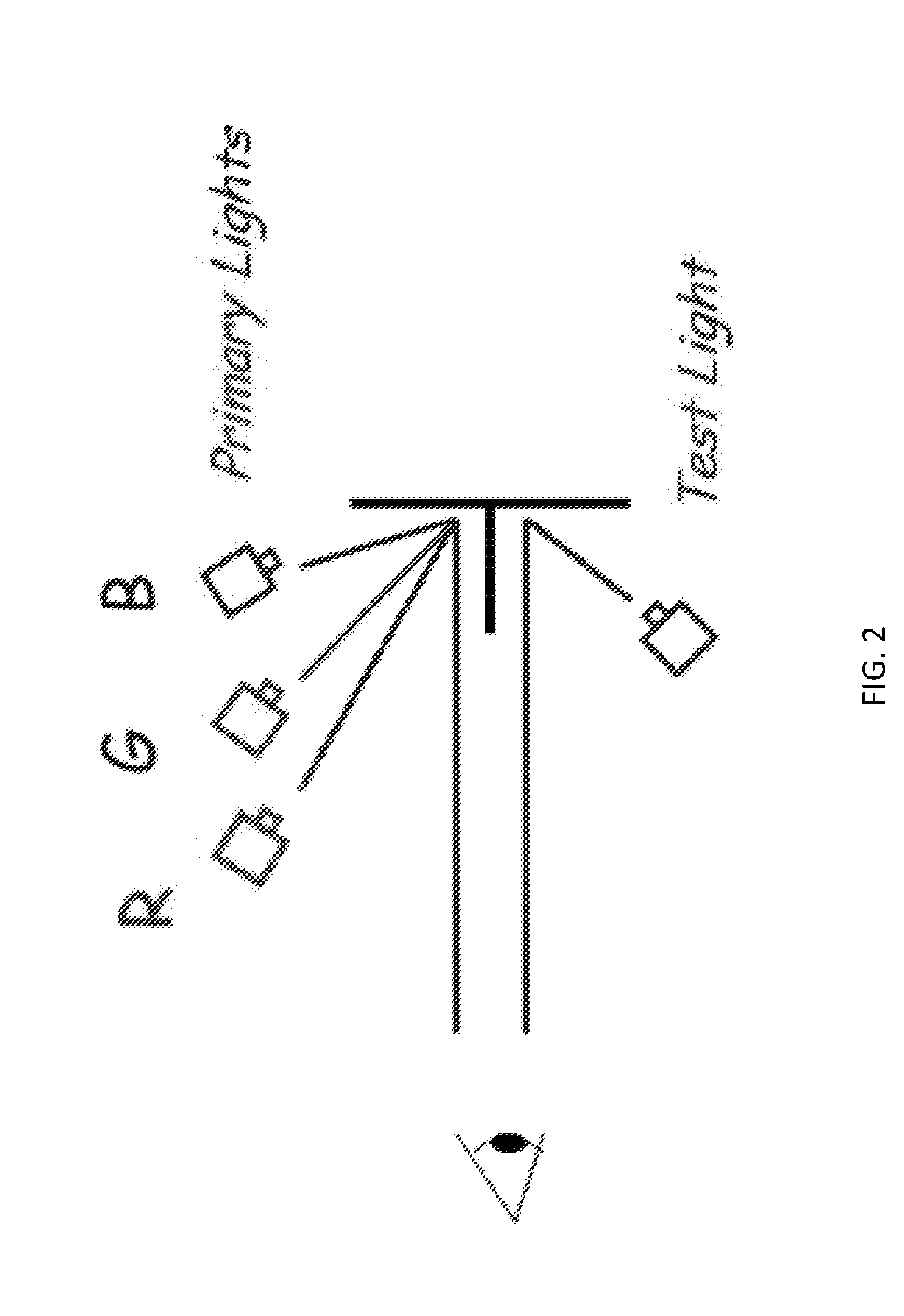Image processing method and system
a processing method and image technology, applied in image enhancement, image analysis, texturing/coloring, etc., can solve problems such as impossible course, and achieve the effects of reducing medium-wave sensitivity, reducing long-wave sensitivity, and improving fidelity
- Summary
- Abstract
- Description
- Claims
- Application Information
AI Technical Summary
Benefits of technology
Problems solved by technology
Method used
Image
Examples
example calculation
[0066]Let us calculate the cone response and deuteranomalous response for a given RGB image I. Here we use the superscript to index the (i,j) pixel location:
pi,j=[M+]−1αi,j Pi,j=[M]−1αi,j (13)
[0067]We now calculate the difference image D:
Di,j=PLi,j−PMi,j (14)
[0068]For a deuteranomalous observer D constitutes the information they cannot see (since their medium- and long-wave sensor mechanisms are almost the same, the contrast between these channels is small or zero). Let us now make a modified image:
Ji,j=MPi,j PSi,j=PSi,j+kDi,j (15)
[0069]Where k is a user-defined scalar. We add the scaled contrast that is invisible to the deuteranope to the blue channel in the hope that this will make the invisible detail visible. In fact the difference image can be added in many ways to the cone image. Rather than adding simply to the blue channel we could add to a so-called yellow blue response (a linear combination of the cones: Y / B=L+M−2S). Alternatively, the difference could be computed by so...
PUM
 Login to View More
Login to View More Abstract
Description
Claims
Application Information
 Login to View More
Login to View More - R&D
- Intellectual Property
- Life Sciences
- Materials
- Tech Scout
- Unparalleled Data Quality
- Higher Quality Content
- 60% Fewer Hallucinations
Browse by: Latest US Patents, China's latest patents, Technical Efficacy Thesaurus, Application Domain, Technology Topic, Popular Technical Reports.
© 2025 PatSnap. All rights reserved.Legal|Privacy policy|Modern Slavery Act Transparency Statement|Sitemap|About US| Contact US: help@patsnap.com



